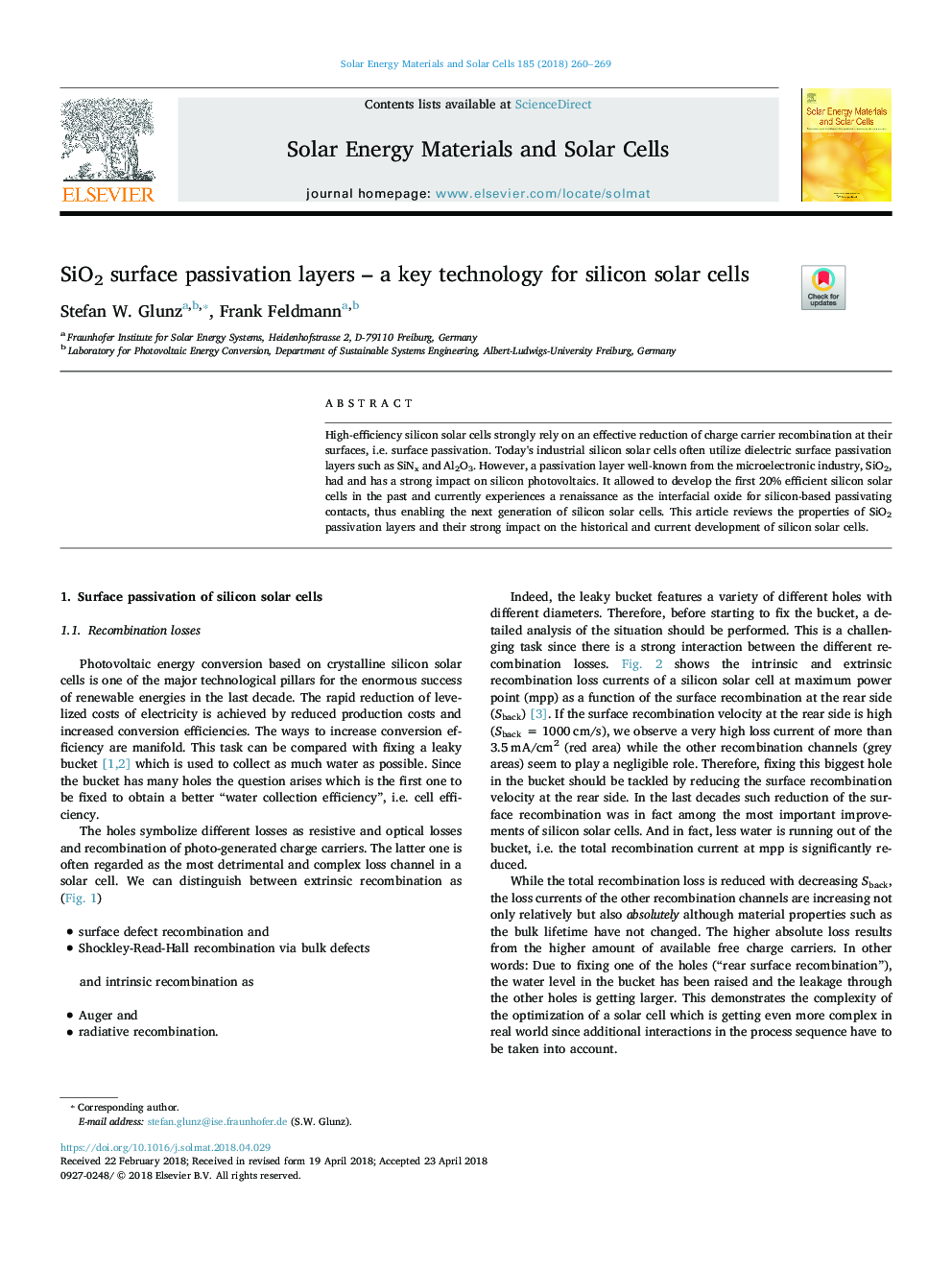| Article ID | Journal | Published Year | Pages | File Type |
|---|---|---|---|---|
| 6534023 | Solar Energy Materials and Solar Cells | 2018 | 10 Pages |
Abstract
High-efficiency silicon solar cells strongly rely on an effective reduction of charge carrier recombination at their surfaces, i.e. surface passivation. Today's industrial silicon solar cells often utilize dielectric surface passivation layers such as SiNx and Al2O3. However, a passivation layer well-known from the microelectronic industry, SiO2, had and has a strong impact on silicon photovoltaics. It allowed to develop the first 20% efficient silicon solar cells in the past and currently experiences a renaissance as the interfacial oxide for silicon-based passivating contacts, thus enabling the next generation of silicon solar cells. This article reviews the properties of SiO2 passivation layers and their strong impact on the historical and current development of silicon solar cells.
Related Topics
Physical Sciences and Engineering
Chemical Engineering
Catalysis
Authors
Stefan W. Glunz, Frank Feldmann,
